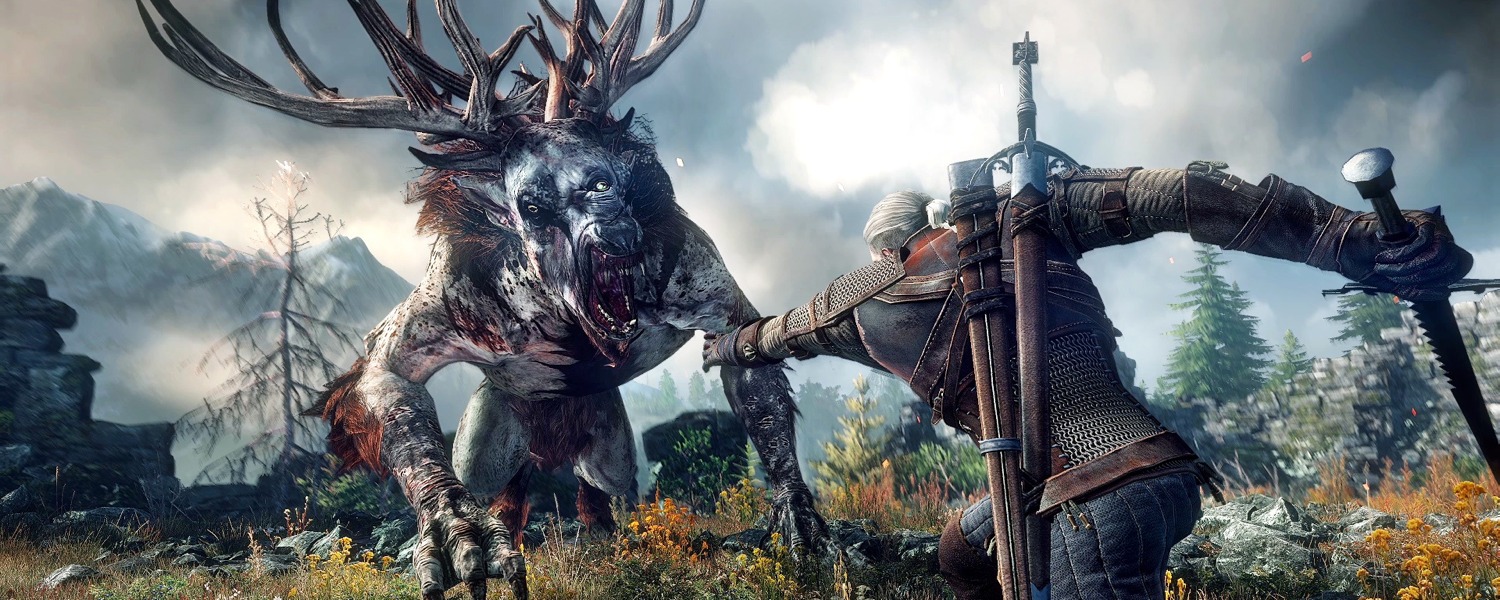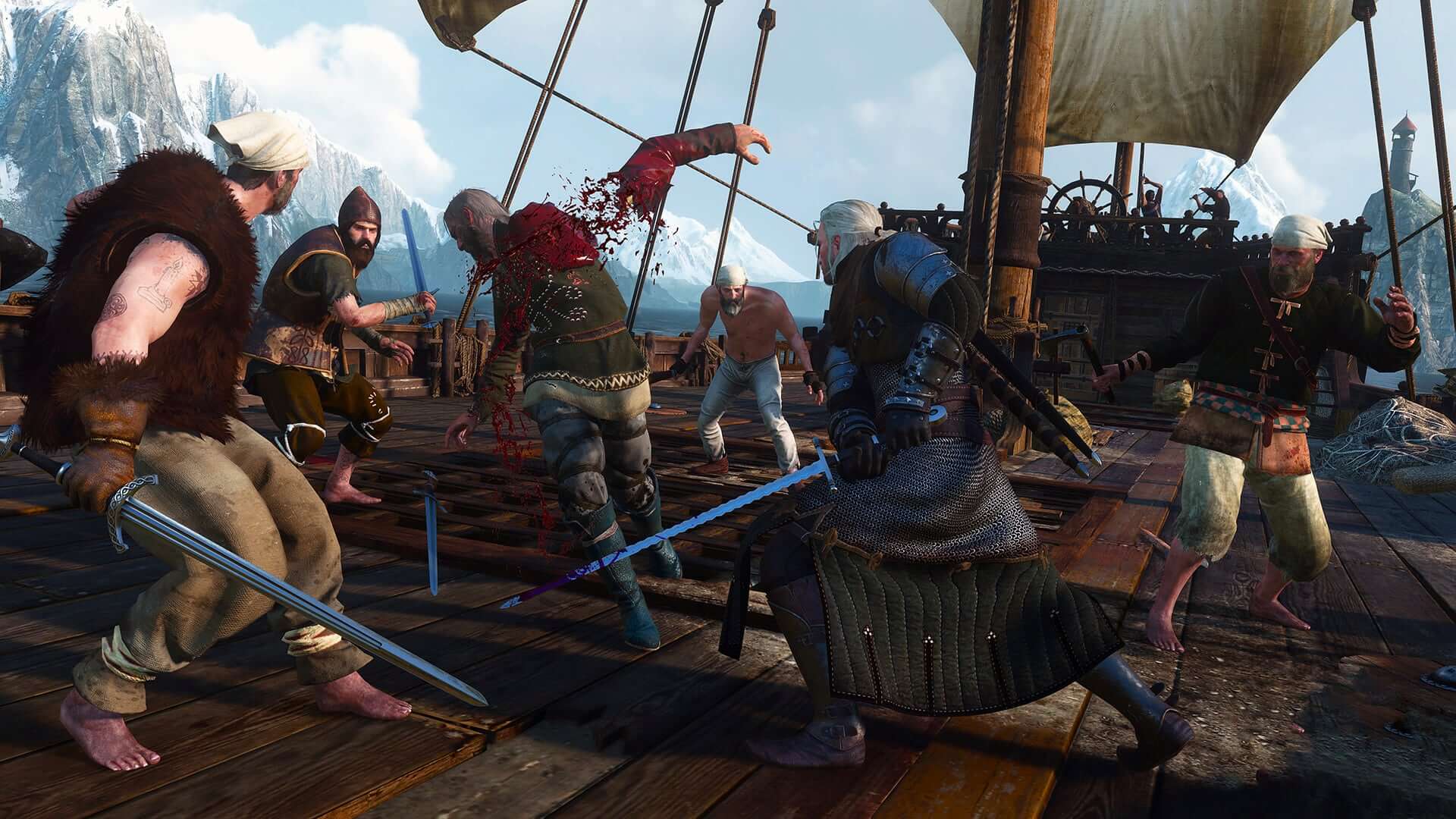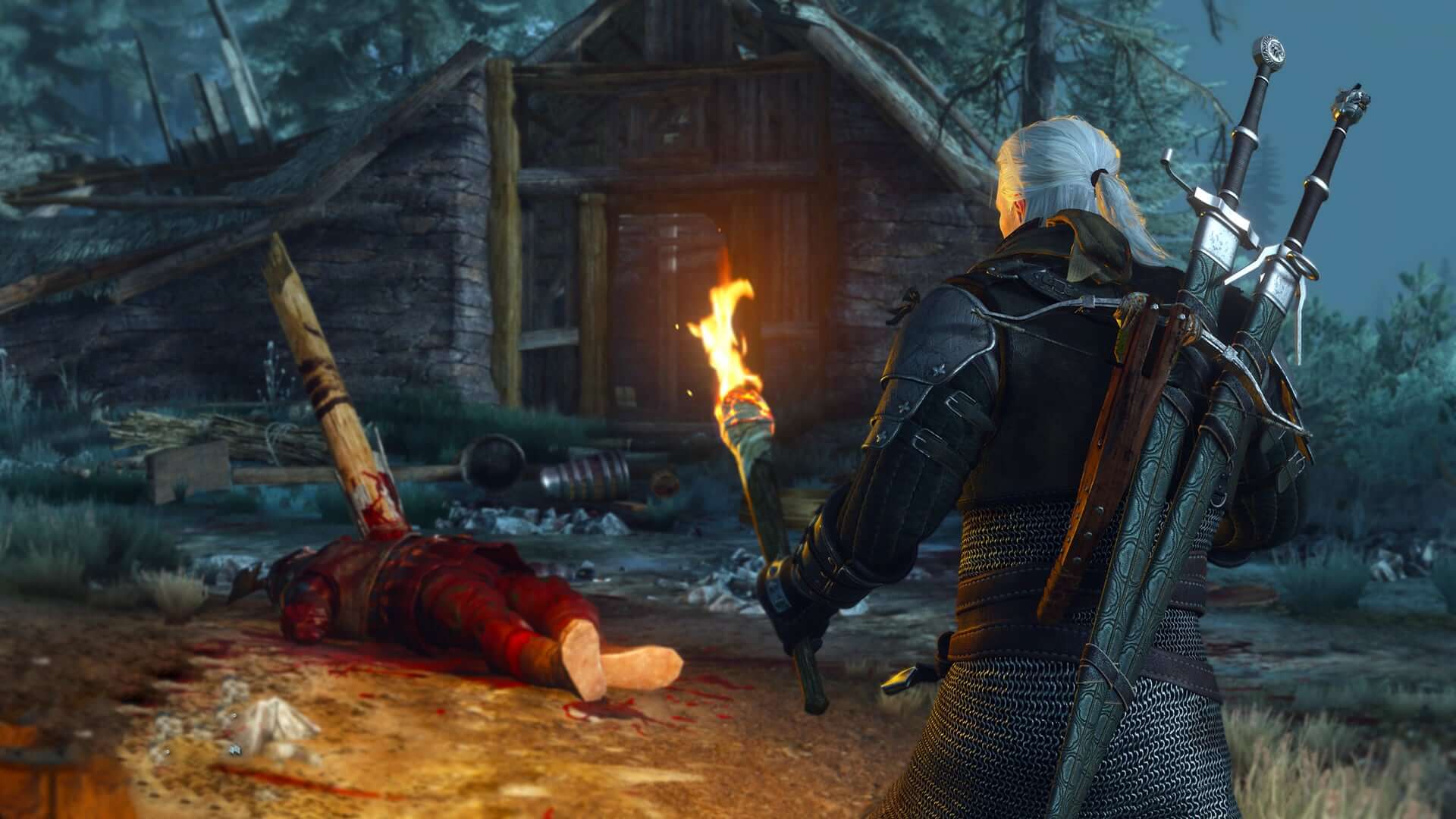Around this time four years ago The Witcher 2: Assassins of Kings impressed critics with its opulent and demanding PC graphics, rich environments and storytelling, along with innovative combat mechanics. Selling nearly two million copies in its first year, the game was a great success for CD Projekt Red so it came as no surprise when a follow-up was announced.
After much anticipation and a few delays, The Witcher 3: Wild Hunt launched this week to a similar degree of critical acclaim, with praises in the order of "one of the best role-playing games ever crafted" (GameSpot), "a game that often feels like a stunningly confident, competent shot across the bow of the open world genre" (Polygon), and "The Witcher 3: Wild Hunt is shaping up to be one of the best RPGs of the year" (PCMag).
Less than a week in however there's some controversy in the PC world involving the game's reveal vs. launch graphics. In 2013, CD Projekt Red (CDPR) teased a world that was bound to bring PC gaming graphics to a new level. That changed with the arrival of the Xbox One and Playstation 4. To optimize Wild Hunt for consoles, it CDPR slightly downgraded some of the visuals that were previously expected to be in the PC build. Quick to react, CDPR has already released a new patch in hopes of addressing some of these, improving graphics and graphical settings in the PC.
Adding to the squabble, The Witcher 3 includes Nvidia's HairWorks technology, which is essentially Nvidia's version of TressFX. But unlike the latter, Nvidia won't share its HairWorks code, so AMD can't optimize its drivers for the technology.
"Many of you have asked us if AMD Radeon GPUs would be able to run Nvidia's HairWorks technology – the answer is yes! However, unsatisfactory performance may be experienced as the code of this feature cannot be optimized for AMD products. Radeon users are encouraged to disable Nvidia HairWorks if the performance is below expectations." - CD Projekt Red spokesperson Marcin Momot
With the Nvidia-influenced Radeon performance issues in Project CARS, it seems the gaming community has had enough and it's not just AMD users crying out over Nvidia's underhanded tactics. Those using Kepler-based GeForce 700 series GPUs and older have started to notice poor performance in new GameWorks titles.
Project CARS was a perfect example as the $200 Maxwell-based GTX 960 was found to be uncharacteristically fast, matching the two-year-old, $1,000 GTX Titan. It'll be interesting to see how Kepler-based GPUs compare to Maxwell parts in The Witcher 3.
How Does It Play in 2019 - 2020?
Widely considered one of the best RPGs of all time, The Witcher is having newfound mainstream popularity thanks to the Netflix TV series. Check out this review for a ton of game detail, plus here a quick update on GPU performance on modern hardware, taken from our recent reviews...
From TechSpot's GeForce GTX 1660 Super review: 1080p and 1440p performance:

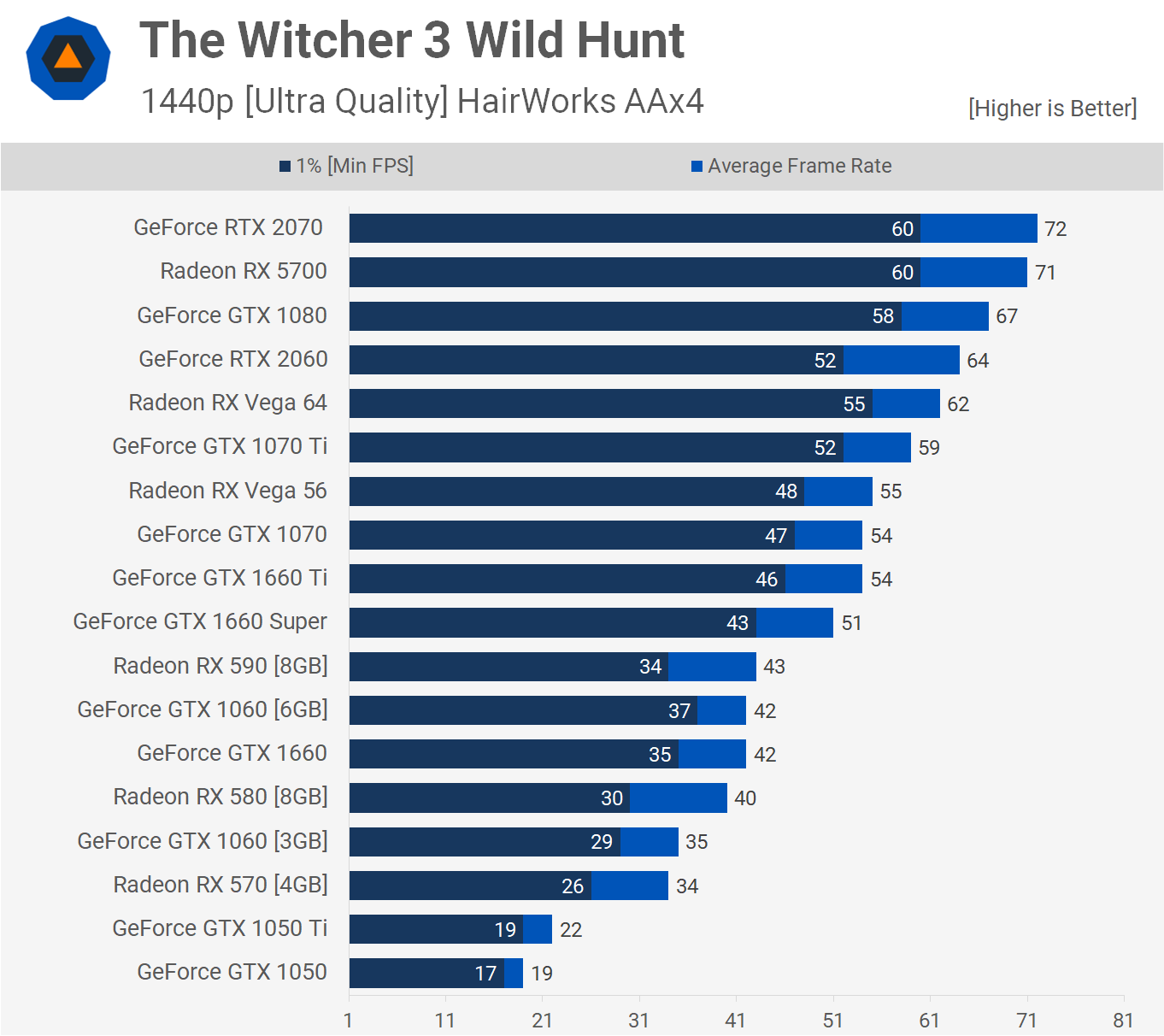
Also from our Radeon RX 5700 vs. GeForce RTX 2060 Super Mega Benchmark:
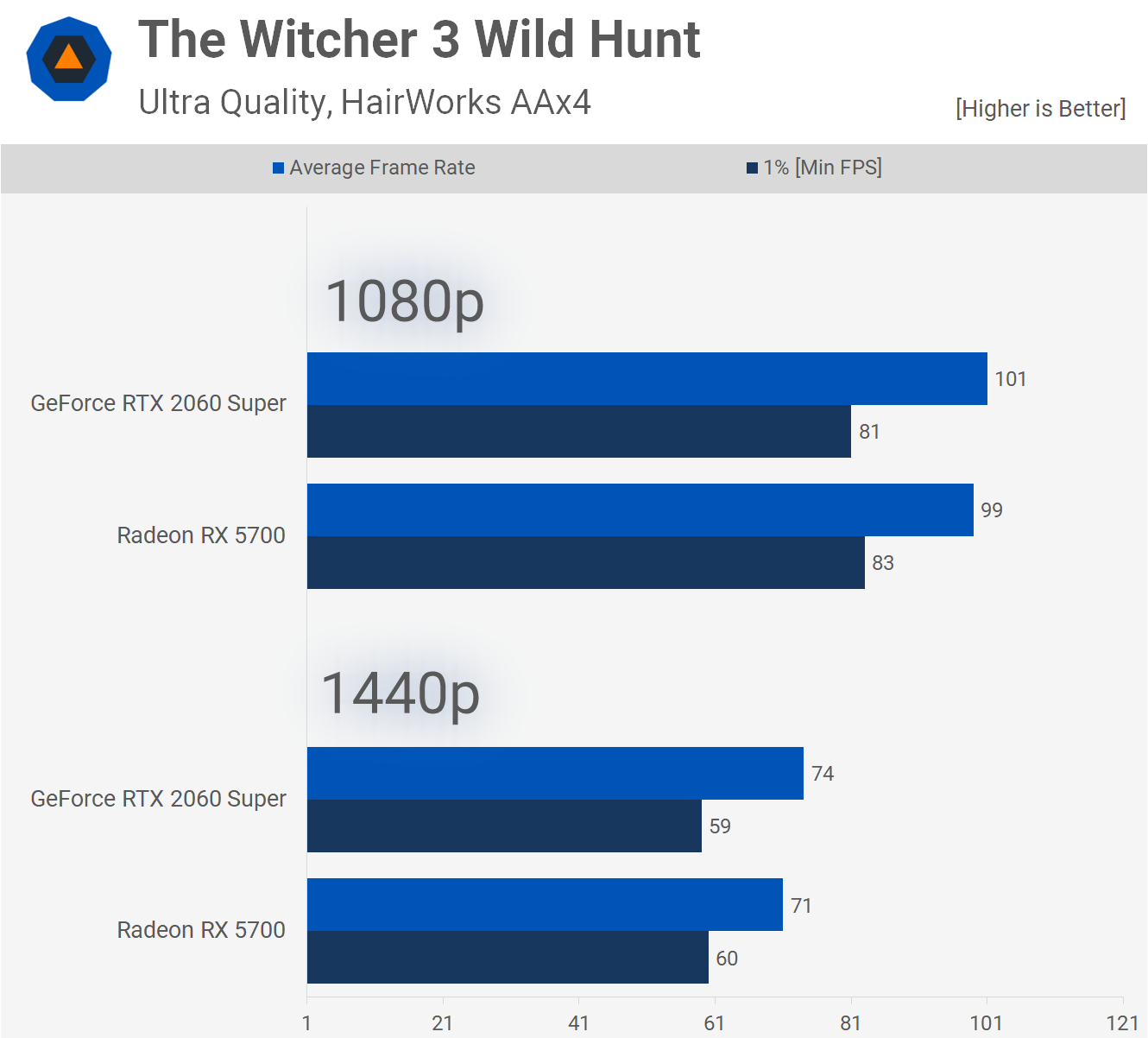
-- Original article content follows below --
Testing Methodology
We've been preparing this article for days and just as we were ready to go live, CD Projekt Red released a new patch that optimizes and improves graphics settings in the PC platform. We'll elaborate on those later.
We are expecting stunning visuals as CDPR recommends an Intel Core i7 and Radeon R9 290. Using the latest AMD and Nvidia drivers, we tested nineteen DirectX 11 graphics cards covering most price ranges. Our test rig was outfitted with an Intel Core i7-5960X to remove CPU bottlenecks that could influence high-end GPU scores.
Using FRAPS we recorded 120 seconds of gameplay starting from the first time Geralt mounts Roach (his trusty steed) and rides toward a Griffin attacking a villager. The test ends when the Griffin flies away with the villager's horse.
The Witcher 3: Wild Hunt was tested at three resolutions: 1920x1080, 2560x1440 and 3840x2160 using medium, high and ultra quality presets. The medium setting disables Nvidia's HairWorks, high only applies it to Geralt and ultra uses HairWorks on everything with hair. The post-processing effects were left on high for all three quality tests.
Test System Specs
- Intel Core i7-5960X (3.00GHz)
- x4 4GB Kingston Predator DDR4-2400 (CAS 12-13-13-24)
- Asrock X99 Extreme6 (Intel X99)
- Silverstone Strider Series (700w)
- Crucial MX200 1TB (SATA 6Gb/s)
- Gigabyte Radeon R9 290X (4096MB)
- Gigabyte Radeon R9 290 (4096MB)
- Gigabyte Radeon R9 285 (2048MB)
- Gigabyte Radeon R9 280X (3072MB)
- HIS Radeon R9 270X (2048MB)
- HIS Radeon R9 270 (2048MB)
- HIS Radeon R7 265 (2048MB)
- HIS Radeon HD 7970 GHz (3072MB)
- HIS Radeon HD 7970 (3072MB)
- HIS Radeon HD 7950 (3072MB)
- HIS Radeon HD 7850 (2048MB)
- Gigabyte GeForce GTX 980 (4096MB)
- Gigabyte GeForce GTX 970 (3584+512MB)
- Gigabyte GeForce GTX 960 (2048MB)
- Nvidia GeForce GTX Titan (6144MB)
- Gigabyte GeForce GTX 780 Ti (3072MB)
- Gigabyte GeForce GTX 780 (3072MB)
- Gigabyte GeForce GTX 770 (2048MB)
- Palit GeForce GTX 760 (2048MB)
- Gainward GeForce GTX 680 (2048MB)
- Gainward GeForce GTX 660 Ti (2048MB)
- Gainward GeForce GTX 660 (2048MB)
- Microsoft Windows 8.1 Pro 64-bit
- Nvidia GeForce 352.86 WHQL
- AMD Catalyst 15.4 Beta
